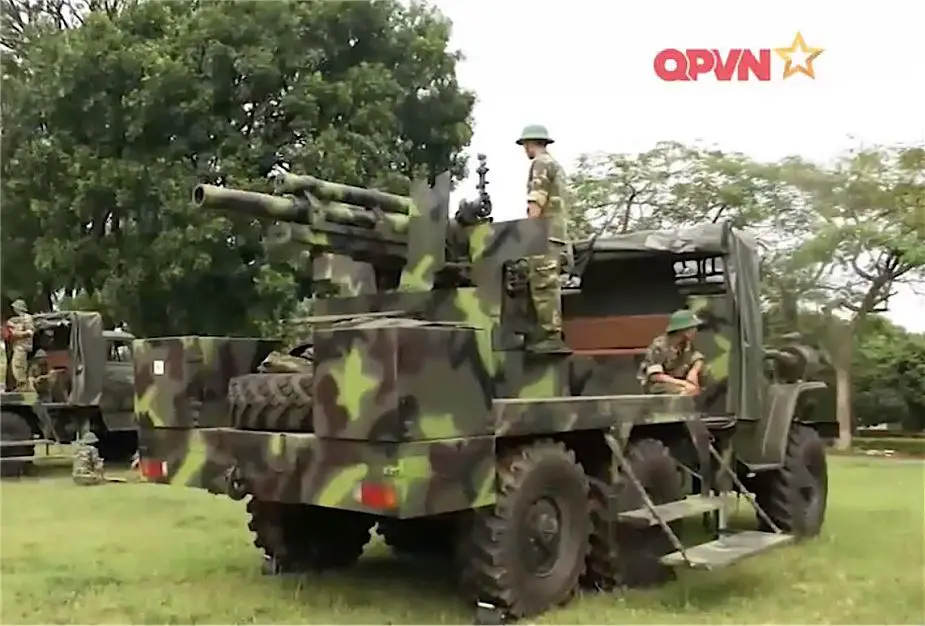Vietnam has developed wheeled self-propelled howitzer using M101 105mm towed gun
Vietnam has developed a wheeled self-propelled howitzer based on Russian truck and US-made M101 105mm towed howitzer mounted a the rear of Ural-375D truck chassis. Today, many armies in the world make the choice to use wheeled self-propelled howitzer to replace towed and tracked artillery weapon systems.

Vietnamese Army 105 mm wheeled self-propelled howitzer. (Picture source Twitter)
The greatest tactical advantage in the case of wheeled self-propelled artillery guns is clearly the greater degree of mobility they have compared to towed artillery. Not only is it important in offering military forces greater flexibility, but it is critical in avoiding an attack from the enemy (counter-battery fire) by allowing the guns to change position immediately after firing one or more salvos and before their position can be located.
The new Vietnamese self-propelled howitzer uses an old type of towed howitzer and truck to reduce costs and produce locally a weapon which response to the request of Vietnamese armed forces.
The Ural-375 is a general-purpose 4.5-ton 6×6 truck, produced at the Ural Automotive Plant in the Russian SFSR since 1961. It has a curb weight of 8,400 kg with a maximum payload of 4,500 kg. It can run at a maximum road speed of 76 km/h.
The 105 mm M101A1 is a towed howitzer developed and used in the past by the United States Army. The M101 fires its own range of 105mm ammunition. The maximum range is 11.5 km with standard ammunition and 15.1 km with rocket-assisted ammunition. The maximum rate of fire is 10 rounds per minute, which is reduced to 3 rpm during sustained fire.
The M101 uses a two-wheel split trail carriage. The 22-caliber 105mm gun uses a hydropneumatic recoil mechanism and has no muzzle brake. A metal shield protects the crew of 8 against small arms fire and shell splinters over the frontal arc.





























